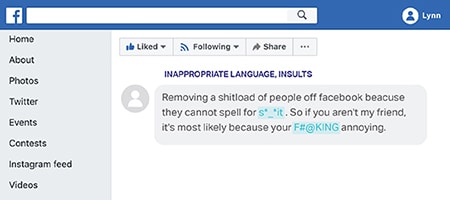Today, over 5.19 billion individuals explore the internet. That’s a vast audience, isn’t it?
The sheer volume of content generated on the internet is nothing short of staggering. From social media updates and blog posts to user-generated comments and multimedia uploads, the online world is a vast and dynamic repository of information.
Yet, not all content is good. Some might offend various groups due to age, race, gender, nationality, or ethnicity. Such content needs a careful watch. This ensures peace and harmony for everyone.
Hence, the pressing need comes for content moderation. Even though the manual review is effective, there are certain limitations that we can’t ignore. And that’s where automated content moderation comes in as an effective solution. This efficient method ensures safe online experiences and shields users from potential harm.
In this piece, we’ll talk about the invaluable benefits and the diverse types available in automated moderation tools (pre-trained with robust datasets).
Understanding Automated Content Moderation
Automated content moderation uses technology to oversee and manage user-generated content. Instead of humans scanning every post, algorithms and machine learning do the heavy lifting. They quickly identify harmful or inappropriate content. These systems learn from vast data sets and make decisions based on set criteria as pre-trained with human-in-the-loop.
Automated content moderation methods can be highly efficient. They work round-the-clock and instantly review large content volumes. Yet, they also complement human reviewers. Sometimes a human touch is essential for context. This blend ensures safer online spaces as users get the best of both worlds.
Want a platform free from harmful content? Automated content moderation is the way forward. We’ll make it more clear as you read the types and benefits below.
[Also Read: The Necessary Guide to Content Moderation]
Types of Automated Moderation
Automated content moderation has evolved considerably over the years. It now incorporates a spectrum of technologies and approaches, each designed to cater to specific needs. Here’s a closer look into the different types:
Keyword-based Moderation
Image Recognition Moderation
Video Analysis Moderation
Similar to image recognition, video analysis breaks down video components frame by frame. It checks for inappropriate visuals, audio cues, or flagged content. It’s invaluable in platforms like YouTube where video content dominates.Sentiment Analysis Moderation
Contextual Moderation
User Reputation-based Moderation
Social Media Monitoring Moderation
Benefits of Automated Moderation
Automation brings various benefits along with it. Let’s have a closer look at the benefits that automated content moderation offers:
Efficient Content Filtering
With the surge of User-generated content (UGC), platforms need systems to sift through vast amounts. Automated content moderation offers efficient content filtering. It ensures that only appropriate materials see the light of day.
Enhanced Digital Safety
Online safety is important to upload users’ trust in using the internet. Automation helps uphold digital safety by detecting harmful content. From hate speech to online harassment, it keeps such threats at bay.
Adherence to Community Guidelines
Community guidelines maintain platform integrity. Automation ensures these rules aren't breached and it helps create harmonious online spaces.
Combatting Online Harassment and Hate Speech
Automated systems can swiftly identify and eliminate online harassment and hate speech. They ensure platforms remain welcoming and safe by flagging harmful content.
Addressing Disinformation and Fake News
In the age of rampant disinformation, automation plays a pivotal role. It detects and suppresses disinformation/fake news to uphold truth and accuracy.
Tackling Trolling
Trolling can ruin online dialogues and derail meaningful conversations. Automated content moderation spots these trolls and helps in maintaining a positive environment. Imagine a classroom. IT acts as that cautious force that promotes constructive interactions and provides users with a better experience.
In-depth Analysis
Text analysis goes beyond mere keyword detection. It understands context and promotes genuine content while removing harmful narratives. Beyond texts, image recognition tools detect inappropriate visuals. They ensure images align with platform standards.
Comprehensive Video Moderation
Video content dominates the digital space as people love engaging visuals. Automation steps in to guarantee these videos uphold specific standards. It sifts through massive content volumes, detects harmful elements, and removes them promptly.
Conclusion
Automated content moderation presents both benefits and challenges. It excels in removing unsuitable content from digital platforms. However, it also faces limitations and stirs debates on censorship and technology’s role. In many instances expert moderation from humans is also required in case of ambiguity.
Platforms should be clear about moderation rules. They also need systems for users to challenge content removal decisions for fairness and accuracy. With the right balance, we can achieve fairness for online users while maintaining their safety and upholding their rights.














